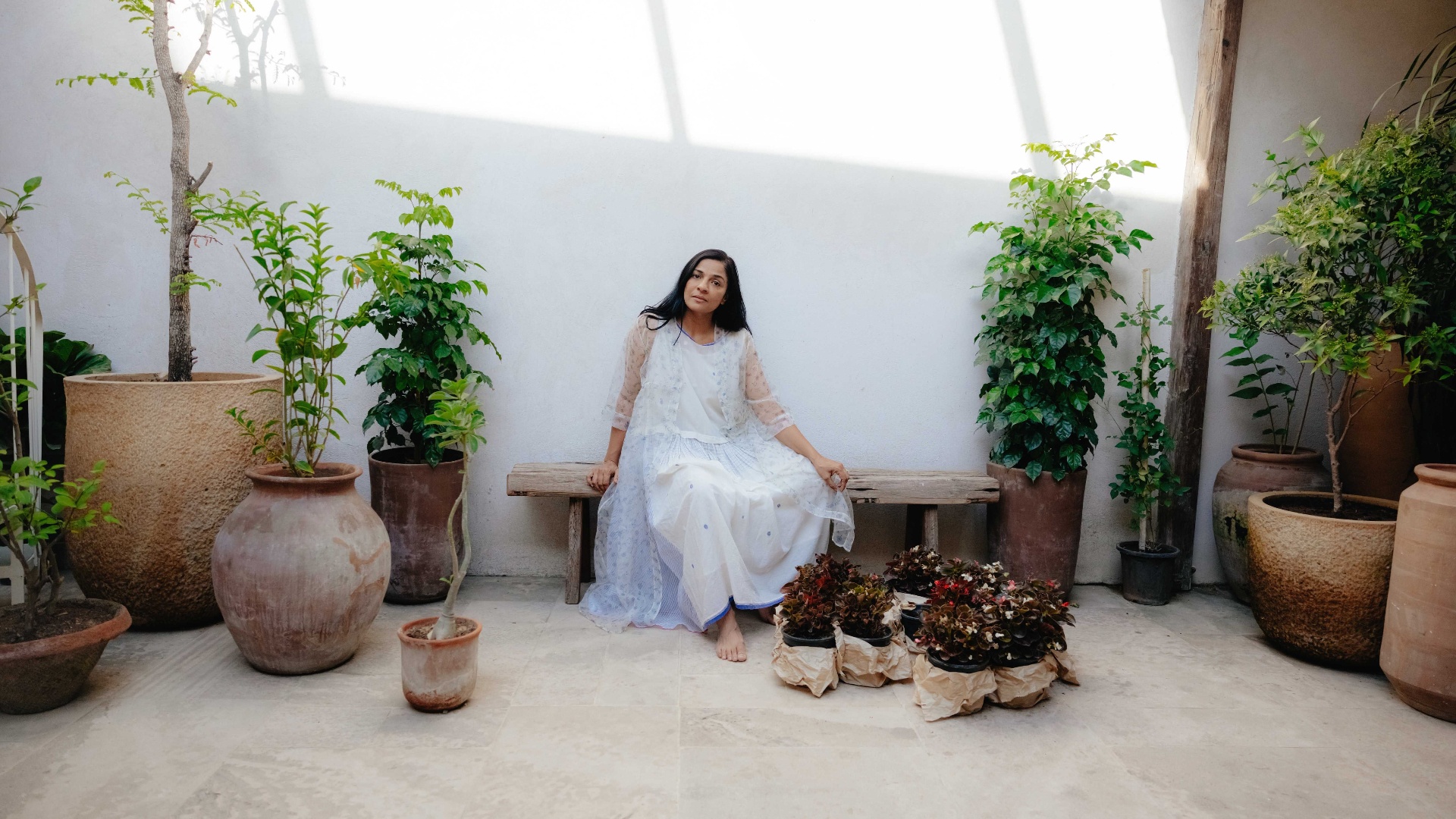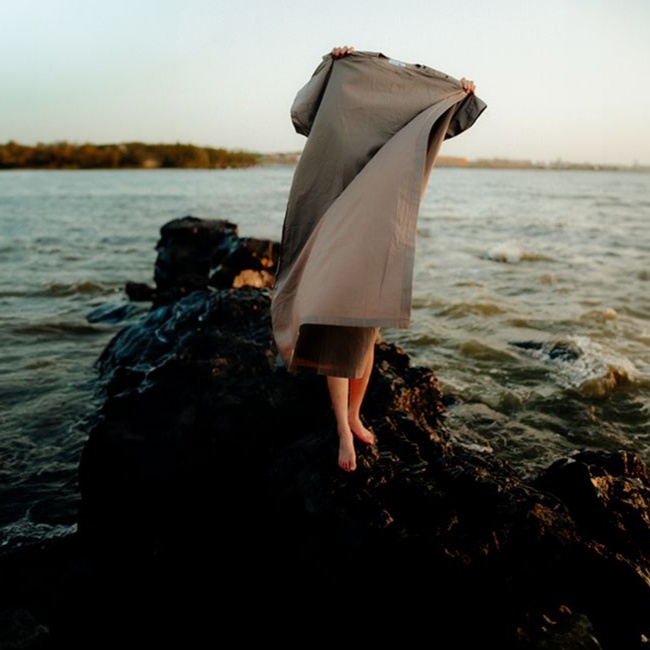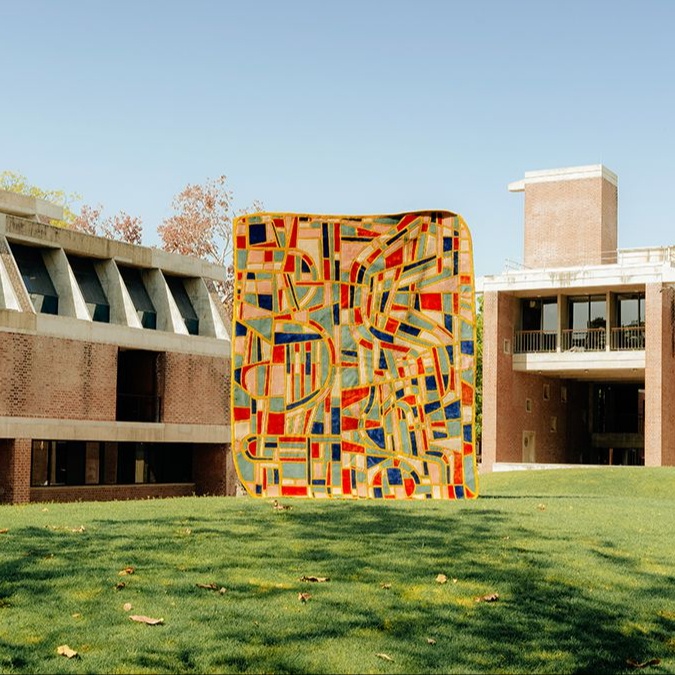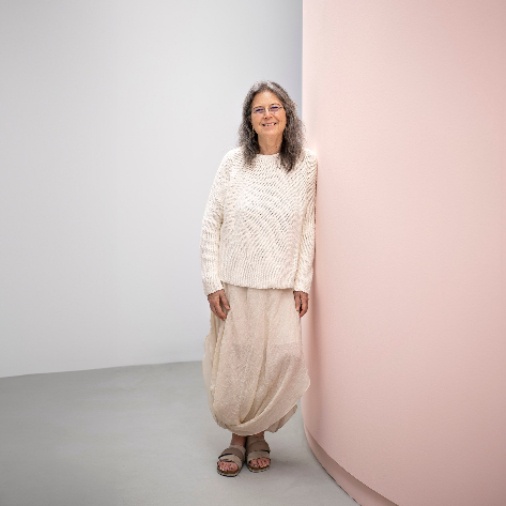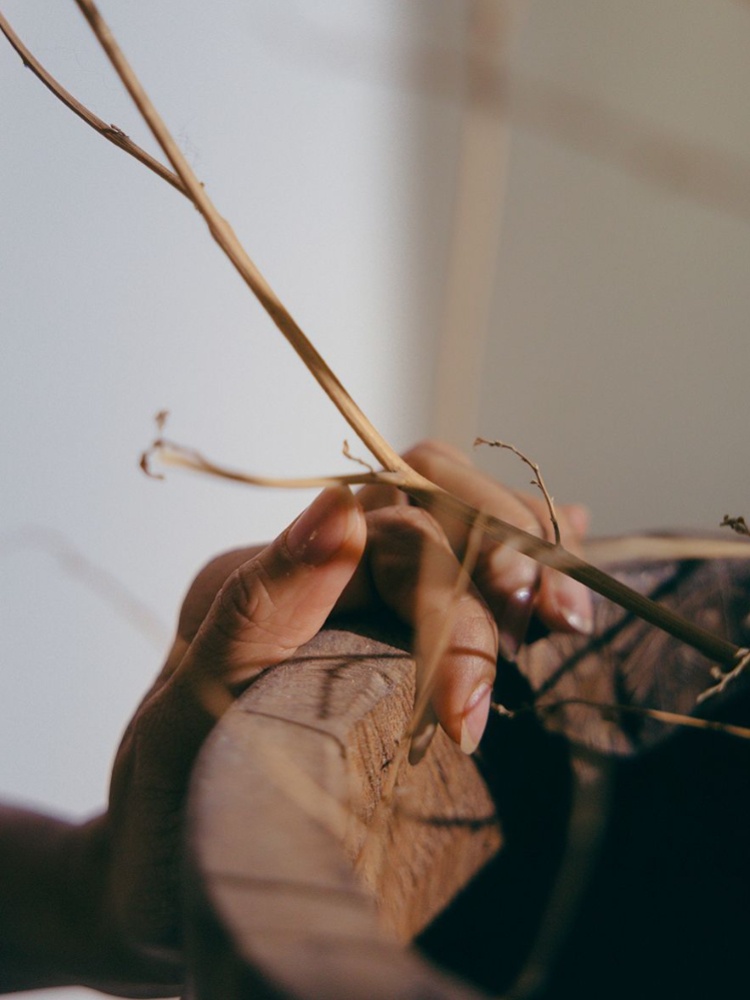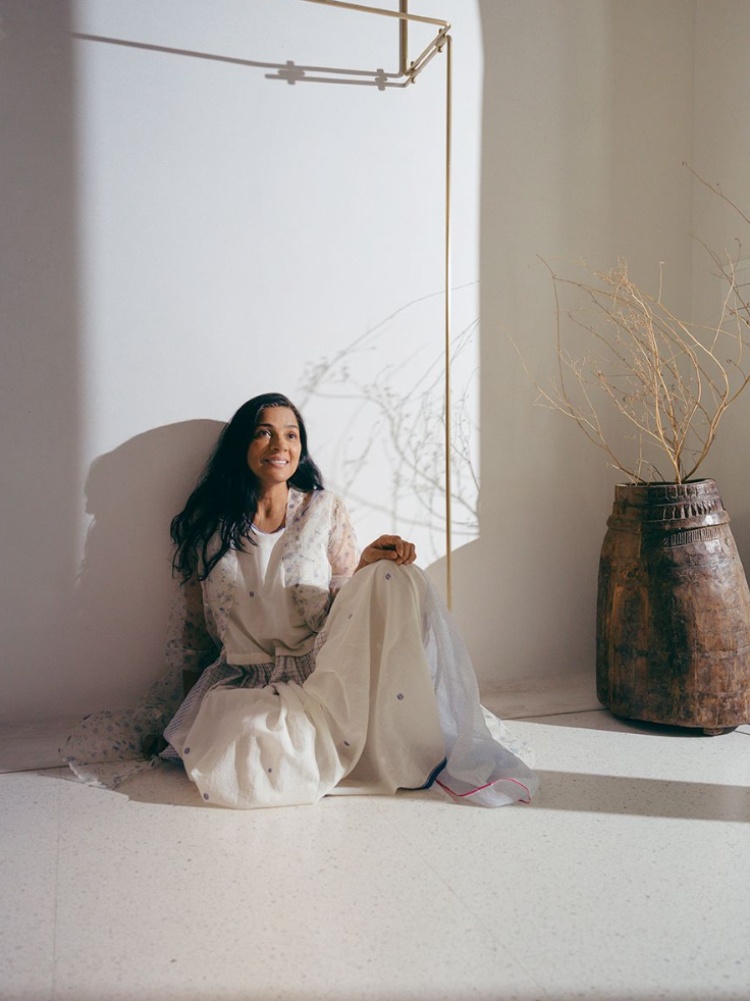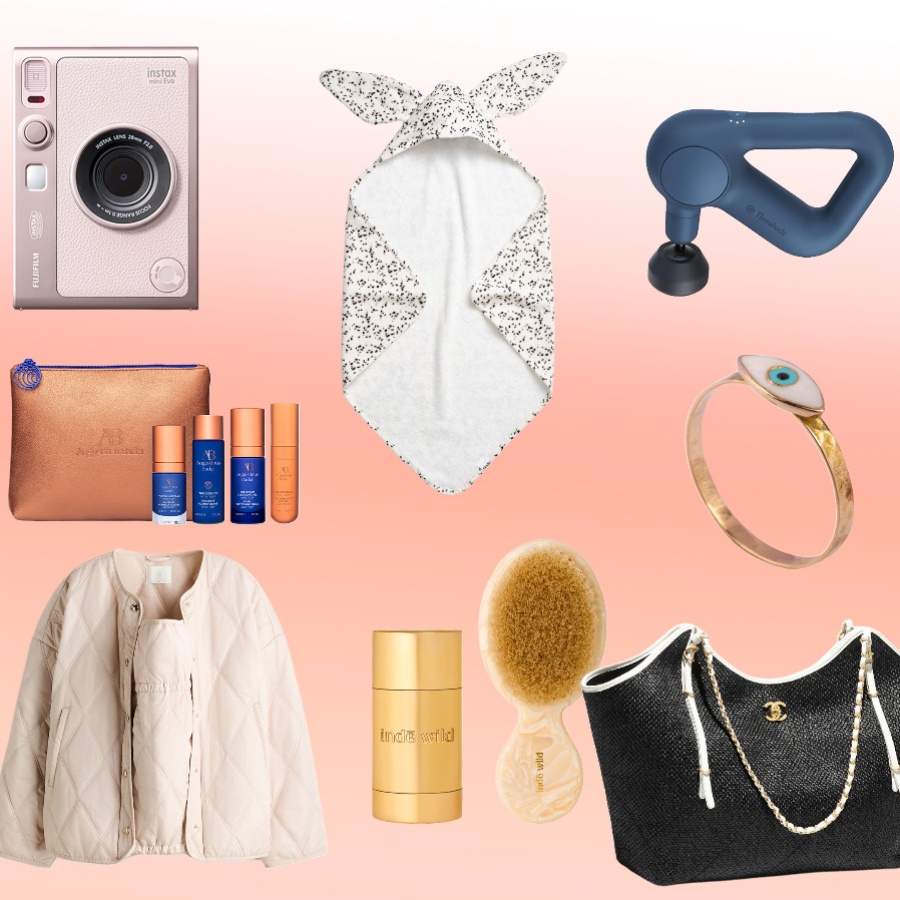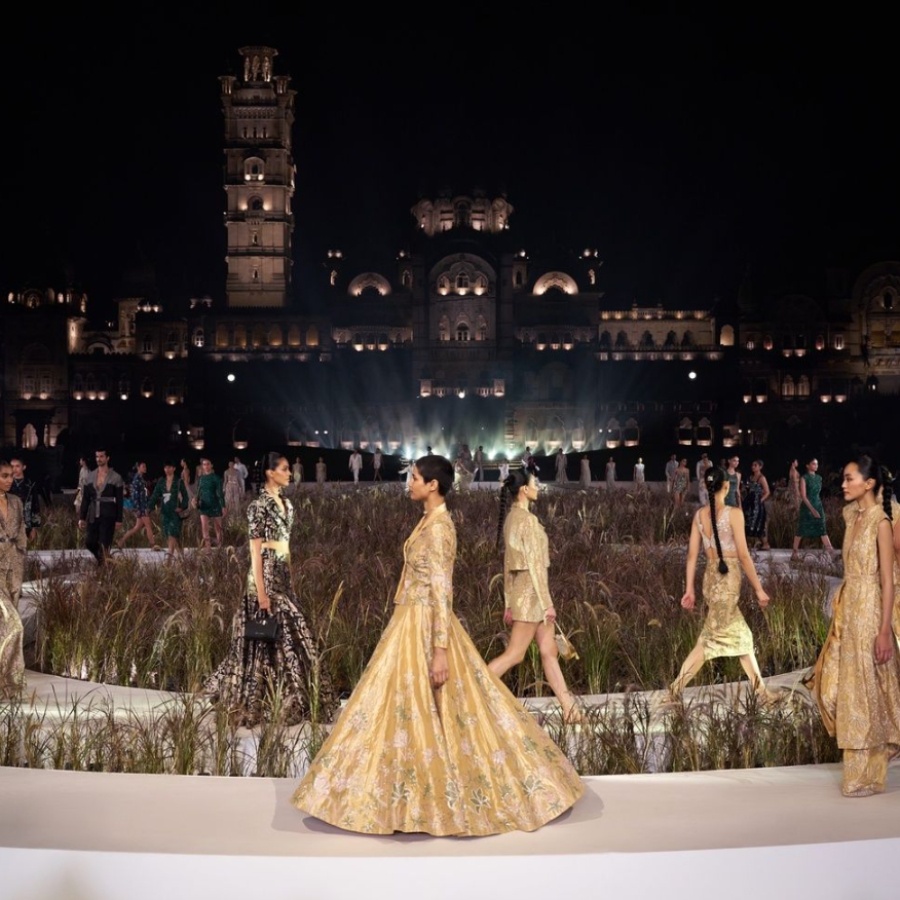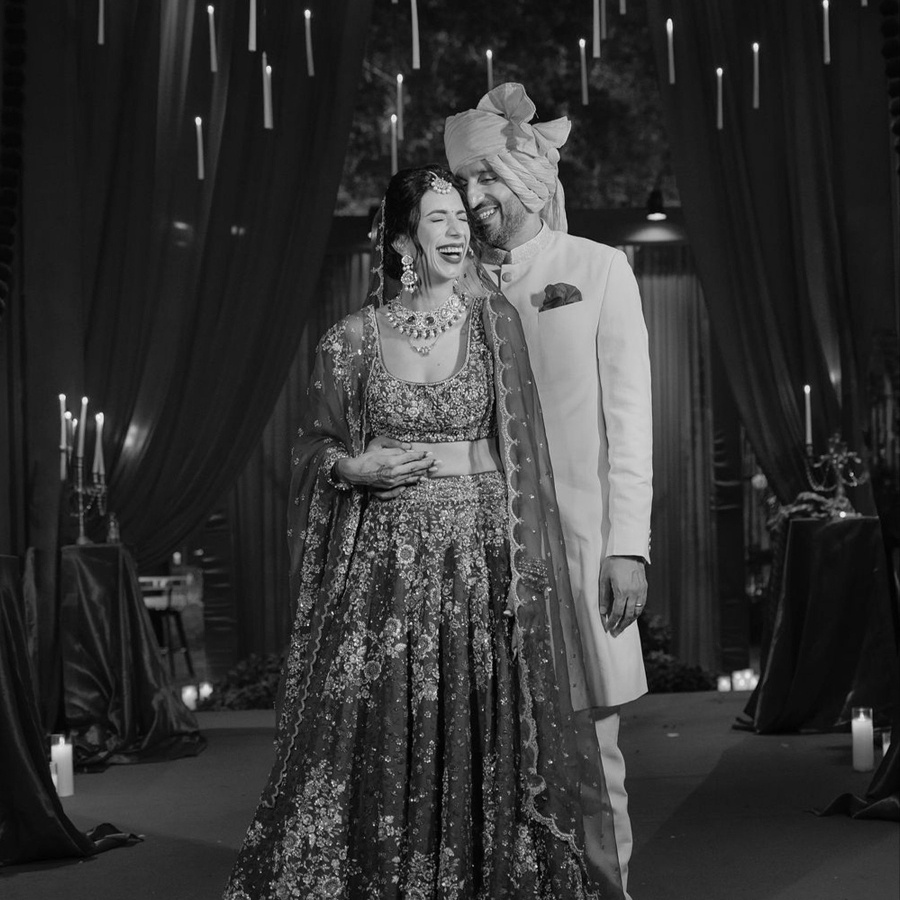When sustainability was the buzziest word at fashion weeks in India, several brands emerged and were quick to align themselves with the green path. Over time, many fell off the list, but a handful survived. Among them was the notable and quiet Eka. Launched in 2011 by Rina Singh, Eka exists somewhere in between its founder’s idealistic vision for a textile-forward brand and the physical expression of it that is to be consumed. Through Eka, Singh is also nurturing a mindset—to exist mindfully and retain a sense of individuality and identity in a world rushing transformations and newness one reel at a time.
Singh found her design feet researching textiles and craft clusters in the R&D department of NIFT Gandhinagar. She took those learnings to a corporate stint at Wills Lifestyle, where she headed womenswear design. She cites Archana Shah of Bandhej as instrumental in guiding her understanding of how a modern, commercial fashion designer could harness the power of traditional craftsmanship. A stint studying in London led her to examine who she was making clothes for, and the role of Indian crafts and textiles in a global context. “After I travelled the world, I realised that craft was a big part of labels like Anthropologie, Free People, and Fig.” Several designers in India take on export orders for these labels as an entryway into international business.
Despite the tepid interest in her first collection (at a trade show in London), Singh soldiered on, taking a chance on her instinct. Since then, she’s built a signature look that straddles comfort and delight, and has garnered fans from Somerset to Sydney. It’s a combination of whimsical volume and tender embroideries, delicate lace and painterly block prints. A decade later, her label continues to grow at an unhurried pace.
The Nod chatted with her about the journey she’s on to create the kind of brand that hasn’t existed before.
How did Eka happen?
The DNA of Eka was set in the first two years of its inception. I started the brand after 10 years of being in the industry, so I knew what I wanted. I always understood design, but India’s ecosystem is so vast. My upbringing was so deeply entrenched in craft and rural India [both her parents are agriculturists and educationists], so I have always valued community living and the everyday local intelligence of crafts.
My first collection didn’t get a lot of business, but I encountered many interesting people and eventually received an order. For me, that first little success was enough for me to find my direction in the world, and I just wanted to do better from there. It was a lot of learning—building your visual library and vision, finding the best textiles, figuring out who will wear your clothes and how they will wear them. I am very happy for the small success I had early on because it made me want to grow. Had that not been the case, my vision would have become narrower. In that sense, I did find the universe I wanted to fit in, and I needed to find the right tools to grow in it.
